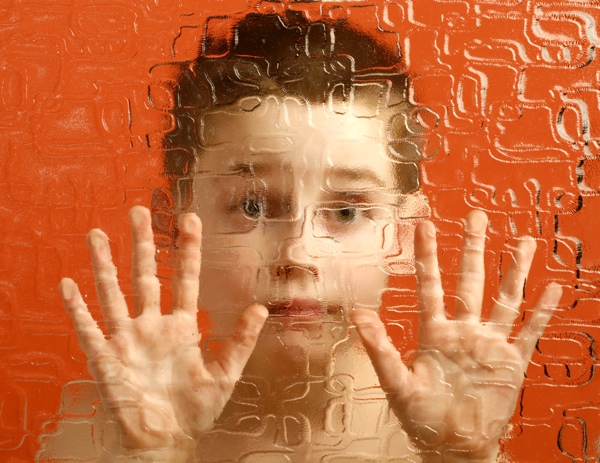Everybody dreams, but not equally. That’s one thing neurologist Patrick McNamara discovered in 2001 when he began working on the idea that social relationships affect dreams. His team tested 300 university students who were rated based on their attachment status—how comfortable they were with intimacy and how likely they were to avoid a relationship. Attachment status was separated by “secure” and “insecure.” McNamara found that the students who were high on the insecure attachment scale would—without fail—report more dreams every night, and in greater detail than the secure students. Interestingly, the dreams of the insecure group were also rated as much more morbid and intense than the other group. Since the area of the brain known as the anterior temporal cortex is important for both attachment and REM sleep, what might be happening is that increased dreaming sort of fills in the gap for people who aren’t attached. Either way, you end up with a lot of activity at night.
Lucid dreaming is the ability to recognize the fact that you’re in a dream. Once you do that, you’re able to control what happens—fly, have sex, have flying sex—anything you want. Not surprisingly, it’s something that a lot of people strive for every night, and entire books have been written on the subject that claim to teach you how to lucid dream on cue. Well as it turns out, maybe all you have to do is play video games. Jayne Gackenbach of Grant MacEwan University believes that the type of environmental control and spatial awareness you get from playing in a game environment overlaps with how you perceive a dream environment. That makes it more likely for a gamer—as opposed to a non-gamer—to “take control” of the environment and become lucid. She also discovered that gamers were less likely to have nightmares—when they were threatened, they attacked the threat and turned it into a challenge instead of running away.
The age-old question of why we dream is finally answered—thanks to rats. Matthew Wilson of MIT discovered that when rats were trained to run around a circular track, their brain activity had a very specific pattern. Later, Wilson scanned the brains of the rats while they slept and found that in about half the rats, the exact same neuron pattern was occurring while they were in REM sleep—the rats were running the loop again in their dreams. The two scans were close that the researchers could compare them and actually figure out where the rat was on the “dream” loop. This suggests that the rats’ brains were storing the information by replaying it—at the exact same speed as in real life, it’s worth noting. Wilson believes that one of the main functions of dreams is to solidify memories. This is most likely why you’re better at remembering something if you learn it right before bed. That might also be why…
If your dreams help with your memory, what happens when you have amnesia? The answer: You have absolutely no clue what you’re dreaming about, but you damn well dream it anyway. There are different types of memory; amnesiacs typically can’t store new “declarative” or “episodic” memories—specific facts or time references (such as when or where you learned a fact). But when amnesiacs were instructed to play the game Tetris, they dreamed about it anyway, despite having no memory of the game by the time they went to sleep. As they were drifting to sleep, the amnesiac study participants were woken up and questioned about what they saw. Three out of the five described seeing “falling, rotating blocks,” even though they had no context for the memory. Since a large part of dreaming is storing recent memories, amnesiacs must be assaulted with those types of bizarre images on a regular basis. Even with our most bizarre dreams we can usually pick out plenty of familiar objects—for amnesiacs the imagery seems to come from nowhere.
The study with amnesiacs and Tetris prompted Dr. Robert Stickgold, the author of the study, to create another hypothesis about dreams—namely, why they’re so strange. He figured out that amnesiacs retain the imagery from an event even if they can’t consciously pull it from memory, yet for some reason the brain plays back that imagery during sleep. His theory is that the seemingly bizarre dreams—say where you’re at a restaurant with your fifth grade softball coach, but the seats are made of jello and your dog is the waiter—is the brain indexing different stimuli to find connections. Your brain is pulling the memory file of your dog and comparing it to what you know about your softball coach, to see if they should be filed together. As Dr. Stickgold put it, your brain is “looking for cross references—does this fit with this. Sometimes it does and sometimes it doesn’t.” A separate study found that the sheer bizarreness of dream reports went up with increased activity in the right amygdala, an area associated with memory formation. This gives a lot of support to the idea that the stranger a dream is, the harder the brain is trying to find a connection.
As a disclaimer, we’ll look at both sides of this. In the 1960’s, the Maimonides Medical Center in New York conducted a series of paranormal tests. One of these involved precognition—seeing the future. Subjects were split into two groups: One group stayed awake and concentrated on a specific image. The second group was asleep. Researchers then woke up the second group during REM sleep and asked them to record their dream. The weird part is that the majority of the people in the second group described images exactly like the ones that were being “sent” to them. Another example also comes from the 60’s—After a heavy rainfall, a pile of coal slag collapsed and covered a school in the town of Aberfan, South Wales. Over a hundred people died. A psychiatrist named John Barker went to Aberfan to ask if any of the town’s residents had dreamed about the event before it happened, and received over 30 accounts of dreams predicting the event. There are thousands of cases like this, even ones making their way into peer-reviewed medical journals. How have so many people dreamed about tragedies before they happened? Even Abraham Lincoln was reported to have dreamed about his assassination. On the other hand, it’s possible that there’s a simple explanation: The Law of Large Numbers. Here’s a perfect explanation from Richard Wiseman: “First, let’s select a random person from Britain and call him Brian. Next, let’s make a few assumptions about Brian. Let’s assume that Brian dreams each night of his life from age 15 to 75. There are 365 days in each year, so those 60 years of dreaming will ensure that Brian experiences 21,900 nights of dreams. Let’s also assume that an event like the Aberfan disaster will only happen once in each generation, and randomly assign it to any one day. Now, let’s assume that Brian will only remember dreaming about the type of terrible events associated with such a tragedy once in his entire life. The chances of Brian having his “disaster” dream the night before the actual tragedy is about a massive 22,000 to one. However, here comes the sneaky bit. In the 1960s there were around 45 million people in Britain, and we would expect one person in every 22,000, or roughly 2,000 people, to have this amazing experience in each generation. The principle is known as the Law of Large Numbers, and states that unusual events are likely to happen when there are lots of opportunities for that event.” In other words, when a lot of different factors come together, there’s a good chance you’ll end up with coincidences. This is one of those things that’s nearly impossible to prove, but maybe someday in the future we’ll have evidence that dreams really can predict the future. Who knows?
Contrary to popular belief, we don’t only dream during REM sleep—we can dream in any of the five sleep stages, although REM dreams are usually more vivid. So even though we only go into REM roughly every 90 minutes, we can have dozens of dreams each night. Why don’t we remember them all? Because they’re boring. People are twice as likely to remember a dream if it’s bizarre or unusual in some way. The other dreams often consist of very realistic actions, like ironing clothes or checking the mail because, like the rats in item eight, our brains spend a lot of time rehashing previous actions in order to commit them to memory and learn from them. But the crazy ones—especially when you wake up in the middle of them—have a lasting effect that’s really no different than if you saw something truly strange in real life, for example a naked guy running down the street. You won’t remember any of the hundreds of other people on the street, but the nudist sticks out for being shockingly different.
It’s well known that external stimuli—such as a light or a smell or the sound of an alarm clock—can intrude on a dream, but certain things can actually affect the entire quality of the dream—and turn a pleasant dream into a nightmare or vice versa. Smells, for example, can have a dramatic affect on what you dream about. In the study, researchers let the participants go to sleep and then pumped a chemical through a nasal tube that smelled either like rotten eggs, roses, or nothing (as a control). Then they woke them up and asked what they had been dreaming about. The participants who were given the rotten eggs reported that the emotional tone of their dreams took a nose dive, even if the dream had nothing to do with smells. For example, one person reported dreaming about a Chinese woman who suddenly seemed to be disgusted with her for no apparent reason—the tone of the dream shifted almost immediately.
Anxious? Depressed? Neurotic? You might be having nightmares. At least that’s what was suggested by a study that asked 147 students to fill out a questionnaire each morning for two weeks to measure the frequency of their nightmares. At the end of the two week period, the students were assessed with the EPQ-RS and the POMS-BI, two tests to evaluate a person’s psychological state. At the end, the researchers found a strong connection between the number of nightmares a person had and their state of well-being during the day. The more nightmares they reported, the worse they scored on the psych evaluations. Of course, the problem with this study is that it’s always possible that people who are depressed for other reasons simply tend to have more nightmares, which seems to be true. But honestly, either way you look at it nightmares seem be able to cross the border of sleep into your waking mind. Creepy.
Speaking of creepy, it’s now believed that dreams are very similar to the delirious state experienced by schizophrenics—all the way down to the active areas of the brain. In other words, schizophrenics’ brains simply don’t shut off the dream switch during the day. From a different perspective, that means that each night as we dream, what really happens is that we’re dipping down into a state of schizophrenia, a term colorfully dubbed “our nightly madness.” Illusory dreams, the weird ones, might be the result of incompetent circuits in the brain—it’s reaching for a connection but just coming up with a mash of unconnected memories, thus the strange dream. Everybody has these. But with schizophrenia and similar conditions, the incompetent circuits light up at random times, giving the same experience as illusory dreaming, but while the person is wide awake. So, just don’t go to sleep. Read More: Twitter Social Media HandleyNation
























